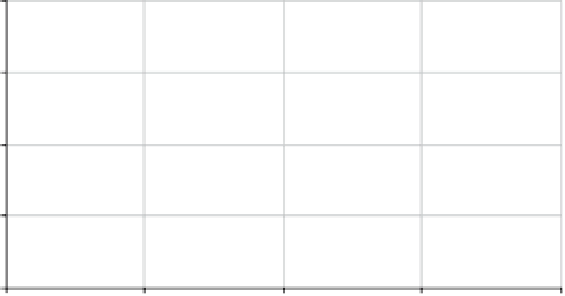Database Reference
In-Depth Information
1: Uninfected Fraser Fir
2: Infected Population
1:
20.00
2:
2
1
1
2
1:
10.00
2:
1
2
1:
2:
0.00
0.00
4500.00
9000.00
13500.00
18000.00
Hours
Fig. 11.20
1: Larva 1
2: Total Suckers
1:
6000000 .00
2:
10000000 .00
2
3000000 .00
1:
5000000 .00
2:
1
0.00
1:
0.00
2:
0.00
4500.00
9000.00
13500.00
18000.00
Hours
Fig. 11.21
before we could begin observing the affects of the pesticide, we had to determine
the optimal application time. This was found to be on day 80, the last day of win-
ter. In addition, the only remaining pests surviving the harsh conditions are those in
the Larva 1 population. Thus, day 80 is the best time to apply pesticides because it
is when the initial pest populations are the lowest. We experimented with different
kill rates (which represent varying pesticide intensities) and found the minimum in-
tensity of control necessary to maintain our original Fraser fir population. This is
essential in a park setting, as this level will minimize environmental and other neg-
ative externalities. We experimented with the following pesticide kill rates: 98%,
11%, 10%, and 5% (Figures 11.22 through 11.25) and found that the optimal kill


